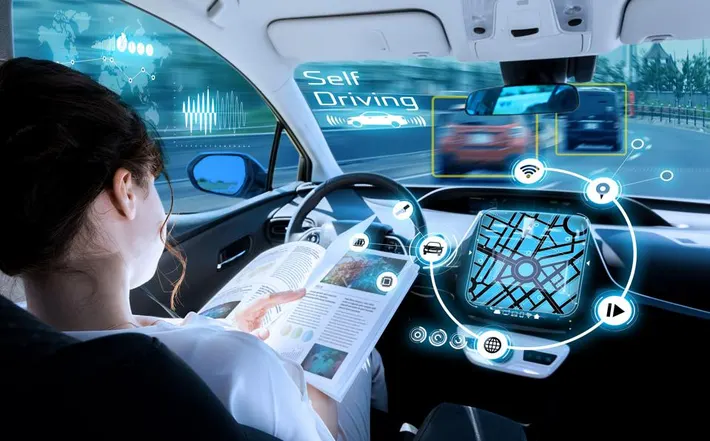Cruise Control in Electric and Hybrid Cars: Navigating the Future of Driving

Cruise control has been a car staple for decades, providing drivers with the ease of keeping a consistent pace without having to constantly adjust the pedals. However, with the introduction of electric and hybrid automobiles, cruise control has evolved to meet the special needs of these modern vehicles. This article looks at how cruise control works in electric and hybrid vehicles, how it affects driving experience and efficiency, and what we can expect in the future from this technology.
The Evolution of Cruise Control in Electric and Hybrid Vehicles
Cruise control in electric and hybrid vehicles is about more than just maintaining a constant speed; it also improves efficiency and driving experience. Electric and hybrid vehicles behave differently than internal combustion vehicles, providing unique opportunities for the integration and enhancement of cruise control technologies. Electric cars (EVs), for example, deliver quick torque and smoother acceleration, which can be fine-tuned for best performance and energy conservation using modern cruise control systems.
The automotive industry is blending modern technology with traditional driving needs. At Cherokee auto auctions, one can observe a range of vehicles equipped with the latest in cruise control technology, showcasing how this feature is becoming a standard in both electric and hybrid vehicles.
Adaptive Cruise Control: A Step Forward
Adaptive Cruise Control (ACC) advances the concept of cruise control. This technology not only maintains a set speed but also modifies it in response to traffic conditions. In electric and hybrid vehicles, ACC is especially useful. It employs sensors and radar to check the distance from the car ahead, automatically slowing and speeding up to maintain a safe distance. This feature is not only easy, but it also improves safety and can lead to more efficient driving by optimizing acceleration and deceleration, which is critical for extending the range of EVs and hybrids.
Furthermore, Adaptive Cruise Control works flawlessly with electric and hybrid vehicles’ powertrain systems. This integration provides more exact control over the vehicle’s speed and acceleration patterns. Unlike traditional cruise control systems, which can result in frequent and often abrupt changes in engine power, ACC in electric and hybrid vehicles provides gentler transitions. This smooth operation is critical to lowering battery strain and increasing overall powertrain efficiency. The end effect is not only a more comfortable ride but also a continuous reduction in energy usage, which is especially useful for extending the battery life and overall health of electric and hybrid vehicles. This technological synergy emphasizes the significance of ACC as a vital aspect in modern vehicle engineering, particularly in terms of environmentally friendly transportation.
Regenerative Braking and Cruise Control
Regenerative braking is a key characteristic of electric and hybrid vehicles. This mechanism recovers energy while braking and returns it to the battery. When combined with cruise control, especially in downhill situations, regenerative braking can actively charge the vehicle’s battery. This integration is an intelligent technique to improve energy economy, extending the vehicle’s range without sacrificing performance.
Furthermore, the sophistication of regenerative braking in conjunction with cruise control goes beyond simple energy recovery. In modern electric and hybrid vehicles, the system is designed to work in tandem with the vehicle’s overall energy management system. This implies that when cruise control is on, regenerative braking changes its intensity based on a variety of criteria such as battery charge level, vehicle speed, and road conditions. For example, if the battery is nearing full charge, the system intelligently regulates the regenerative braking to avoid overcharging. In contrast, when the battery level is low, energy recovery is maximized. This clever balancing act not only maximizes battery life but also ensures that the vehicle functions within its most efficient settings, improving both the driving pleasure and the car’s long-term performance.
Impact on Driver Experience
The use of advanced cruise control systems in electric and hybrid vehicles drastically modifies the driving experience. Drivers can have a more calm driving experience, particularly in stop-and-go traffic, thanks to systems such as ACC. Furthermore, the precision of speed control in EVs and hybrids improves cruise control responsiveness and smoothness, increasing overall driving comfort.
This improvement in driving comfort is augmented by the incorporation of various helpful technologies, which frequently accompany advanced cruise control systems in electric and hybrid vehicles. Lane-keeping assist and automated emergency braking combine with cruise control to deliver a more comprehensive driving aid. This integration results in a more natural driving experience in which the car can help maintain not only speed but also lane position and respond to unforeseen events with minimum human engagement. This collaboration among many technologies not only leads to a more relaxed driving environment but also greatly improves safety. While the driver remains in control, a network of technology continuously monitors and responds to road conditions, lowering the likelihood of accidents and improving the driving experience.
Cruise Control and Energy Efficiency
Cruise control in electric and hybrid vehicles is more than simply a convenience feature; it also improves energy economy. Maintaining a constant pace, particularly on highways, can result in more efficient energy use. Electric vehicles, in particular, benefit from this since constant speeds aid in maintaining optimal battery utilization, hence prolonging the vehicle’s range.
The energy efficiency improvements from cruise control in electric and hybrid vehicles are augmented by powerful algorithms that monitor and react to driving behaviors and environmental variables. These systems can use parameters like road grade, traffic flow, and even weather to change the cruise speed for maximum energy efficiency. For example, in hilly conditions, the system may reduce speed somewhat to conserve energy, and on downhill stretches, it can use regenerative braking to reclaim energy. This clever adaptability ensures that the car functions at maximum efficiency, reducing unnecessary power consumption and increasing driving range. Such features highlight cruise control’s importance not just as a driver convenience tool, but also as an essential component of modern electric and hybrid vehicles’ energy management systems, considerably contributing to their eco-friendliness.
The Future of Cruise Control in EVs and Hybrids
Looking ahead, cruise control in electric and hybrid vehicles is expected to become more advanced. With developments in autonomous driving technologies, we can expect cruise control systems to manage not only speed but also steering and navigation, providing a nearly autonomous driving experience. This progression will improve the efficiency and safety of electric and hybrid vehicles, making them an even more appealing alternative in the future.
Shortly, the integration of AI and machine learning into cruise control systems will result in a major increase in their capabilities. These advanced technologies will be able to learn and adapt to a driver’s behaviors, resulting in a more personalized driving experience. For example, they may change the aggressiveness of acceleration and deceleration based on the driver’s typical driving behavior, or even advise the most energy-efficient routes in real-time. Furthermore, as we move closer to completely autonomous vehicles, these systems will be able to communicate with other cars and infrastructure (V2X communication), allowing them to anticipate traffic situations, optimize route planning, and further minimize energy consumption and emissions. This level of interconnection and intelligence in cruise control systems will not only improve convenience and safety but will also make a substantial contribution to the larger aims of sustainable and smart mobility in cities.
Cruise control in electric and hybrid vehicles is more than just a convenience feature; it plays a critical role in the evolution of modern transportation. As these vehicles grow more prevalent, the integration and enhancement of cruise control systems will play an important role in shaping the driving experience. Drivers of electric and hybrid vehicles may expect more efficient, safe, and enjoyable travel, whether on picturesque roads or their daily commute.






